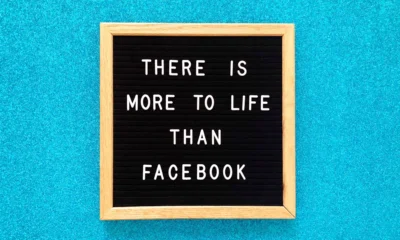Social media has come a long way since its inception. What started as simple bulletin boards and chat rooms has evolved into a complex digital landscape, redefining the way we communicate and connect. In this article, we will take a journey through the history and evolution of social media, highlighting key milestones and platforms that have shaped our online interactions.
Table of Contents
1. Introduction
2. The Early Days: Bulletin Boards and Chat Rooms
3. The Rise of Friendster and MySpace
4. The Emergence of Facebook and the Social Network Revolution
5. Twitter: Microblogging and RealTime Updates
6. Instagram: The Visual Social Network
7. Snapchat: Ephemeral Content and Stories
8. The Impact of YouTube: A Video Revolution
9. LinkedIn: Professional Networking
10. TikTok: ShortForm Video Domination
11. Summary
12. FAQ
Introduction
The story of social media is one of constant innovation and adaptation. It has transformed from the early days of bulletin boards and chat rooms to the highly visual and realtime platforms we know today. Let’s explore this evolution.
The Early Days: Bulletin Boards and Chat Rooms
In the early 1980s, before the internet as we know it today, computer enthusiasts and hobbyists engaged in online discussions through bulletin board systems (BBS). These were essentially digital message boards where users could post messages, share files, and communicate with one another. BBS was the precursor to modern social media.
Chat rooms also played a significant role in early social interaction. Services like AOL Instant Messenger (AIM) allowed users to engage in realtime conversations, and ICQ introduced the concept of a unique identifier for each user.
The Rise of Friendster and MySpace
The late 1990s and early 2000s saw the emergence of Friendster and MySpace. Friendster, launched in 2002, was one of the earliest social networking sites that allowed users to create profiles, connect with friends, and share content. MySpace followed soon after and introduced features like music sharing and personalized profiles.
The Emergence of Facebook and the Social Network Revolution
In 2004, Mark Zuckerberg and his college roommates created Facebook, which would revolutionize the social media landscape. Facebook allowed users to connect with friends, post updates, share photos, and join groups. Its userfriendly interface and exclusivity to college students at the beginning contributed to its rapid growth.
Twitter: Microblogging and RealTime Updates
Twitter, launched in 2006, introduced the concept of microblogging, allowing users to post short updates or “tweets” in realtime. It quickly became a platform for news, trends, and realtime communication, with features like hashtags and retweets.
Instagram: The Visual Social Network
Instagram, introduced in 2010, focused on visual content. Users could share photos and short videos, applying filters for creative effects. It rapidly gained popularity among a younger demographic and became a hub for influencers and visual storytelling.
Snapchat: Ephemeral Content and Stories
Snapchat, launched in 2011, revolutionized the concept of ephemerality. Users could send selfdestructing photos and videos, and the Stories feature allowed them to share a sequence of moments that disappeared after 24 hours. Snapchat’s success inspired other platforms to adopt similar features.
The Impact of YouTube: A Video Revolution
YouTube, founded in 2005, redefined how we consume video content. It enabled anyone to upload and share videos, giving rise to a new generation of content creators. YouTube became a platform for entertainment, education, and even monetization for many.
LinkedIn: Professional Networking
LinkedIn, established in 2002, serves as the goto platform for professional networking. Users can create profiles, connect with colleagues, and seek job opportunities. It’s a vital resource for job seekers and businesses alike.
TikTok: ShortForm Video Domination
TikTok, launched in 2016, has taken the social media world by storm. It focuses on shortform videos, often set to music, and encourages creative expression. TikTok’s algorithm has made it a global sensation, especially among younger users.
Summary
Social media has evolved from early bulletin boards and chat rooms to complex, visually rich platforms.
Key milestones include Friendster, MySpace, Facebook, Twitter, Instagram, Snapchat, YouTube, LinkedIn, and TikTok.
FAQ
1. What was the first social media platform?
The concept of social media began with bulletin boards and chat rooms, but platforms like Friendster and MySpace laid the foundation for modern social networks.
2. How did Facebook change social media?
Facebook introduced the idea of connecting with friends, posting updates, and sharing photos, revolutionizing the concept of online social networking.
3. What is the appeal of TikTok?
TikTok’s shortform videos and algorithmdriven content discovery have made it incredibly popular, particularly among younger users.
4. How has YouTube impacted social media?
YouTube has transformed how we consume video content, empowering content creators and offering a platform for diverse content.
5. Is LinkedIn considered a social media platform?
Yes, LinkedIn is a professional social network that focuses on career networking and job opportunities.

 Technology & Innovation6 years ago
Technology & Innovation6 years ago
 Technology & Innovation7 years ago
Technology & Innovation7 years ago
 Technology & Innovation1 year ago
Technology & Innovation1 year ago
 Technology & Innovation7 years ago
Technology & Innovation7 years ago
 Technology & Innovation1 year ago
Technology & Innovation1 year ago


